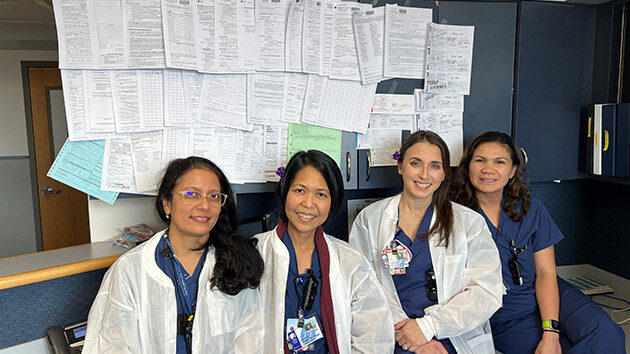Readying for Unified Electronic Medical Record

As the new year brings the first wave of the Albany Med Health System’s Epic launch, members of our workforce are preparing for the changes that will accompany our integrated electronic medical record (EMR).
Albany Medical Center and its practice locations will be the first of the System’s four hospitals to go live with Epic, an EMR used by health care facilities across the globe. Epic will become the source of truth for patient records and information, opening avenues for care teams from each System location to seamlessly collaborate on patient care. Whether a patient is initially seen at Glens Falls Hospital or Columbia Memorial Health, their information will be readily available to clinicians across the System.
For patients, Epic offers a single portal called MyChart that will allow them to access and manage their own health information, from viewing test results to refilling a prescription to paying a bill.
“Epic will revolutionize the way in which we provide care to patients across the System,” said Kevin Alex, RN, director of Specialty Practices for the Saratoga Hospital Medical Group. “Our providers and staff will have access to critical patient information at the click of a button in one seamless system. We will be more connected than ever and be able to provide quality care that is safe, effective, and organized.”
Courtney Shea, RN, from Interventional Radiology at Albany Medical Center, said that what she looks forward to most is less paperwork and one centralized location to access patient information. In many cases, the paper documentation that departments like Interventional Radiology rely on today will soon be migrated to Epic.
“The information we need will be in one location, making our department more efficient and creating more transparency between departments throughout the System related to patient care such as which tests have already been done or what still needs to be addressed,” Shea said.
Hemangini Sharma, RN, from the Digestive Disease Center at Albany Medical Center, also listed easier access to information among the features she believes will be most beneficial. She said, “Having one system that supports the continuity of care will reduce redundancy in patient clinical documentation, give us better access to the information we need at
the point of care, and, ultimately, increase patient satisfaction.”
Epic will initially launch at Albany Medical Center in March, followed by Columbia Memorial Health, Glens Falls Hospital, and Saratoga Hospital in September. In the remaining months until the March go-live, the top priority is preparing our workforce to use Epic on day one. Both Albany Medical Center employees and System employees like Shea and Sharma who will act as super users—at-the-elbow go-live assistance—will attend training in the coming weeks.
Super users will come from each campus to support one another during both phases of the Epic go-live. These employees will be vital resources for their colleagues, having received early and specialized training to be able to answer questions about workflows, policies, and more.
Laurie Harbeck, executive director of Quality, Regulatory, and Performance Improvement at Columbia Memorial Health, said that becoming a super user is an opportunity to foster connections with fellow System employees and become a valued source of knowledge during such a pivotal project.
“It’s really a boots-on-the-ground role,” Harbeck said. “You’re making connections with people from other campuses who are in your discipline, and they become someone to bounce ideas off, to go to with questions about how to use Epic. This will build a greater sense of community and camaraderie within the System.” Alex said that since the start of the Epic project, departments Systemwide have come together and learned from one another to build our unified EMR. The super user program, he said, is another way that our campuses can learn from one another and offer support during the transition.
“The use of super users from Saratoga Hospital and other System campuses in support of the Albany Medical Center go-live is yet another representation of the collegiality that has been evident from the start,” Alex said.
“Undoubtedly, we will have certain aspects of the transition that will go very well and others that will be more challenging, but we’ll learn from one another and adapt our plan as needed. This cross-campus support will be one of our greatest advantages.”